Your basket is currently empty!
The battle of Cerami at the origin of the Ventimiglia coat of arms
“… and you reach an occult Abbey,
solitary in the woods,
to fulfill a sacred promise
that Count Ruggero did in San Giorgio,
appeared in battle at Cerami on the back of a white steed, glory
of one hundred Normans against fifty thousand Saracens.
A chronicler wrote
“Before the battle, Roger,
together with his nephew Serlone,
they made the fighters sing the Gospel
invoking the help of his holy protectors:
Saint Michael and Saint George.
So they smote them in the open field,
with the help of a mysterious knight
Armed with a spear and a vermilion cross”.
(From “Gratteri da Crater, coppa Graal: grezzo diamante nella concava roccia “ by Marco Fragale)
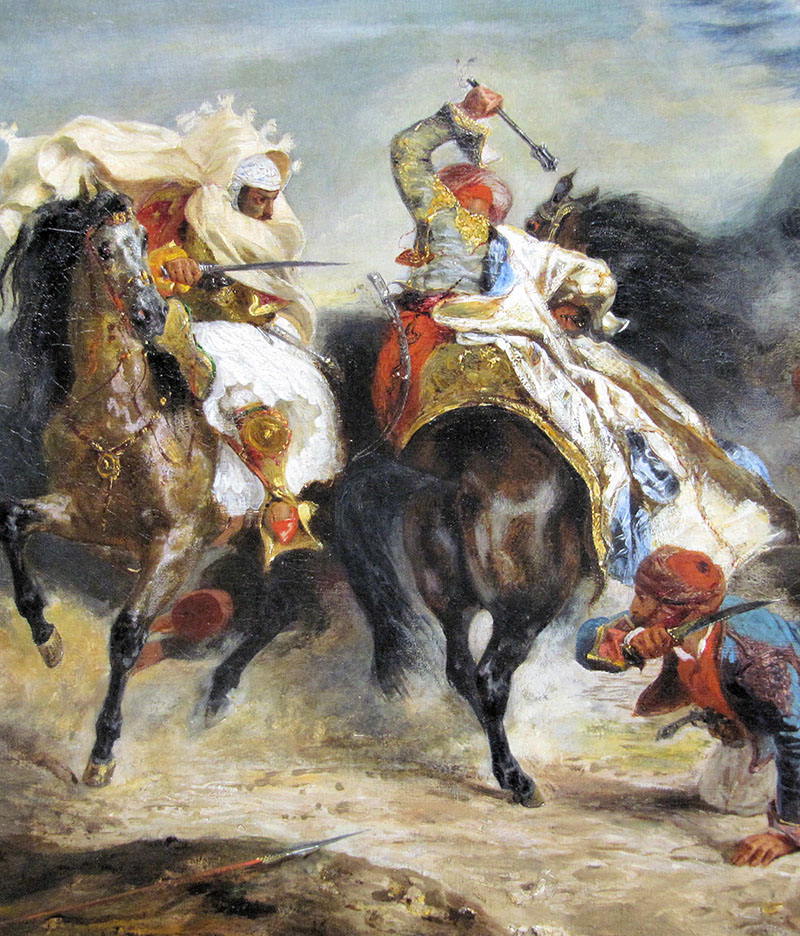
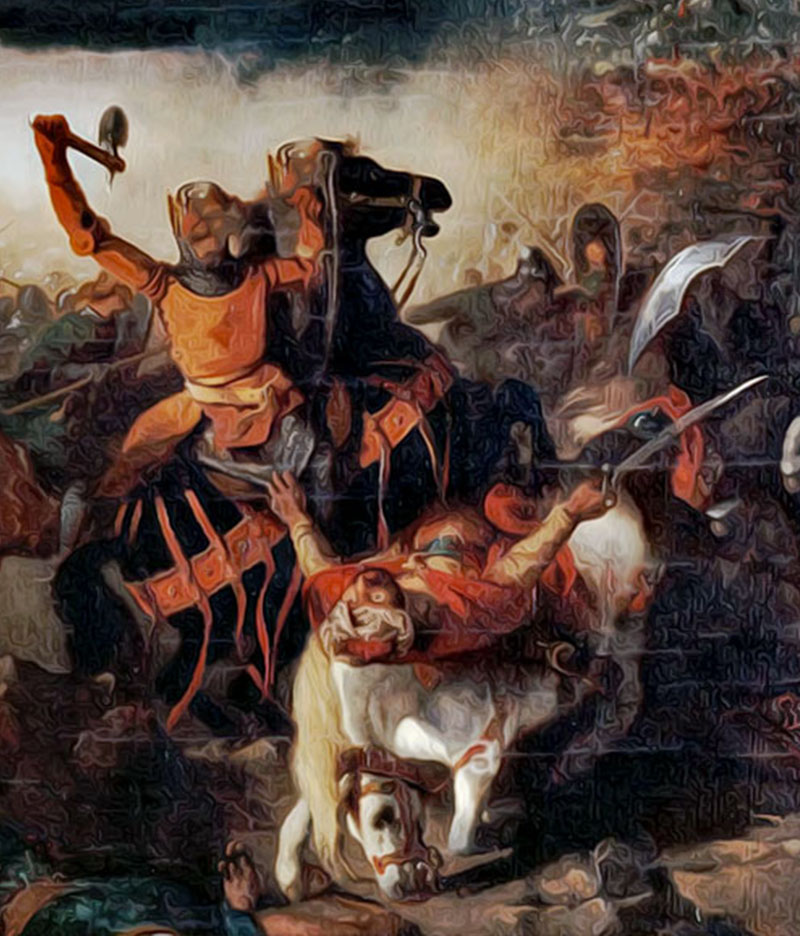
alone in an enchanted forest inhabited by wolves in a highly suggestive scenery and in a strategic point of intersection between two Roman roads at the time very beaten by wayfarers and pilgrims, was built, around the year 1140, the Priory of Gratteri by order of Duke Ruggero, eldest son of King Ruggero of Altavilla who wanted to dedicate it to Saint George, Christian martyr, since, according to the Norman tradition, had appeared in battle at Cerami together with the Archangel
Michael after being invoked by the Great Count.
The battle of Cerami (1063) – in the province of Enna – can be considered a legendary battle comparable for its epicity to that of Thermopylae where, however, the heroism and human prowess are not exalted but the divine help that led, according to tradition, only one hundred and thirty-six Norman men to triumph against fifty thousand Saracen soldiers.
In fact, from the historical point of view, that battle won by the Norman army, undoubtedly marked the beginning of their dominion over Sicily. From that moment on, King Roger managed to recapture the entire island by freeing it from Saracen oppression and the Normans built churches and monasteries in honor of Saint George and Saint Michael.
The stories of the eleventh century of the court historian Goffredo Malaterra (De rebus gestis Rogerii Calabriae et Siciliae comitis et Roberti Guiscardi ducis fratris eius) speak of the deeds of this heroic battle. The Benedictine monk recounts the clash that took place between the Normans of Roger and a Muslim alliance of Sicilian troops and zirids. According to this story, since the morning, when the battle was expected, Roger, together with his nephew Serlone, they made the
fighters sing the verses of the Gospel (even today that contrada is called Evangelio).
At first the battle turned to the Saracens; The Count called for the help of his patron saints, Saint Michael and Saint George, who suddenly appeared on the battlefield. The soldiers, at the sight of the two Saints, were seized by such enthusiasm that they vigorously counterattacked, seizing an overwhelming victory.
The Malaterra writes «they defeated them [the Saracens] and killed twenty thousand and as many took them prisoner with the help of a mysterious knight with white arms, the white steed, armed with a spear from the white pennoncello and the vermilion cross» (MALATERRA GOFFREDO, op. cit.). Their vision and encouragement filled the Normans with courage and indomitable will.
In this way, the Saracens were faced with renewed and almost unbeatable enemies. After a day of struggle they remained corpses everywhere, but the Christians were the winners (the site of the camp of battle took the name of Million, for the many dead). In Cerami, in memory of the Norman victory and the patron saints, two churches were built in honor of San Michele and San Giorgio.
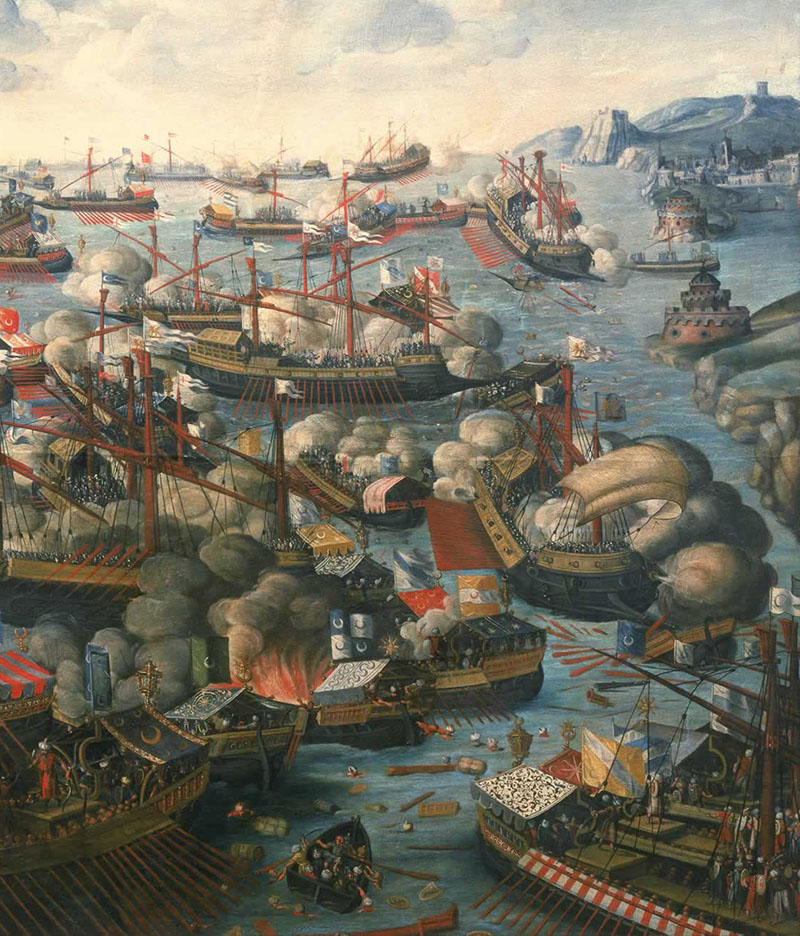
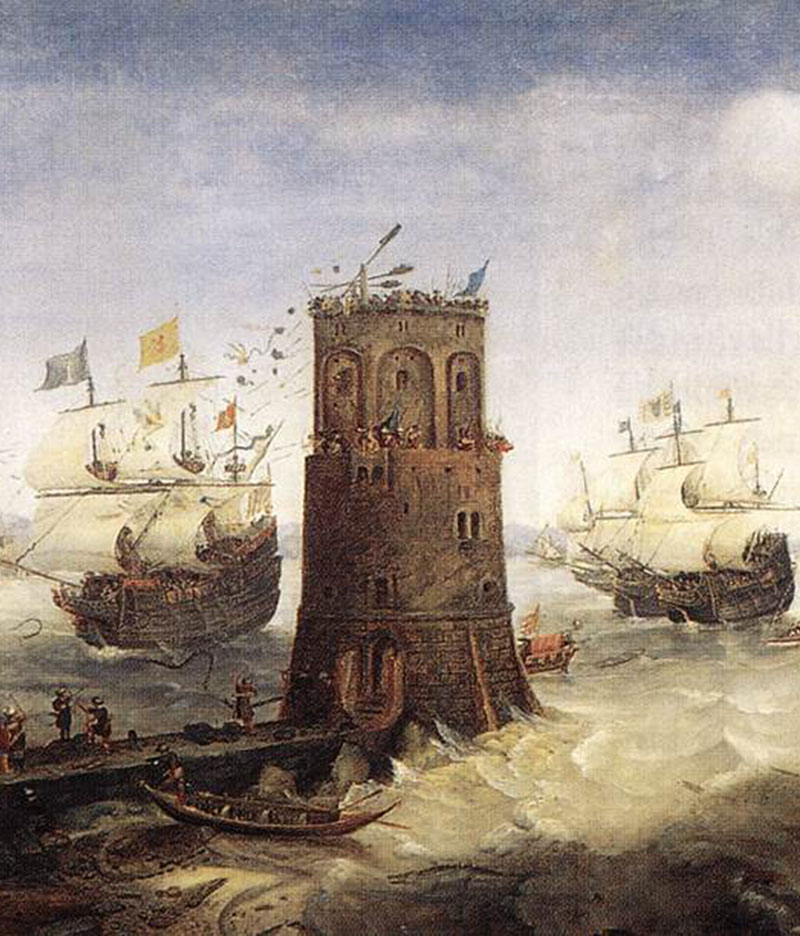
Beyond the credibility of the story of Malaterra, probably inspired by the battle of Ponte Milvio in 312, a story that owes its fortune to the defeat of the great army of the Saracens by a small number of Normans, It is important to note that the choice of the Norman monk to refer to the saint winner of the dragon, as patron, is part of a probable Nordic tradition now consolidated and, therefore, still current
among the ranks of the Nordic militia.
After the victory of Cerami, the Normans built several churches dedicated to San Giorgio and San Michele. Gratteri’s is an example, founded by Duke Ruggero, Duke of Puglia and eldest son of Roger II around the year 1140 and entrusted by Pope Innocent II to the Premonstratensian friars – reformed Augustinians from Normandy or Picardy – who gave a clear architectural imprint with peculiar characteristics of French Romanesque.
However, few know that the Battle of Cerami is also linked to the name of the historic Madonita family of Ventimiglia. For centuries, in fact, it was believed by historians and genealogists that the Ventimiglia descended from the Altavilla, in particular by Riccardo Serlone, son of Tancredi and then brother of Count Ruggero.
Such an ancestry was very convenient to the Ventimiglia, who could thus boast of being the oldest aristocratic family of the Kingdom of Sicily, unlike the many feudatories of the most recent and recent nobility, but during the modern age they reached top positions from which they were forced to remain far away (CANCILA ORAZIO, op. cit.).
To the Marquis Simone I Ventimiglia, who around 1528, when asked about the origin of his family, expressed the conviction that it came from Genoa, Giuseppe Sancetta, “gentleman of Palermo”, had no doubt: the Ventimiglia descended from Riccardo Serlone, who at the head of a thousand Christian knights had defeated in 1063 at Cerami as many as twenty thousand Moors, whence the surname Ventimilia, whose shield acquired the colors (gold and red) of the flag attached to the spear that an angel had given him before the battle: appeared (miraculous) un angilo, lo quali in presentia di tutti milli donao a dicto Riccardo una lanza, in la quali era una banderola de cendaro, dueparte in ialno [= yellow] et una carmexina, a cui parlando disse: servo di Dio, tu si exaudito, va con firma speranza chi la victoria hogi serrà la tua, (CANCILA ORAZIO, op. cit. pp. 14-15).
Today of that Norman monument – contemporary to the cathedral of Cefalù – there remains only a Romanesque portal and the vestiges of an ancient abbey for too long forgotten. However, recent archaeological excavations have also recovered part of the ancient monastery attached to the church, finding significant capitals of petrified monsters and Saracen faces of extraordinary workmanship that make that of Gratteri, a milestone of the Arab route-norman in Sicily.
Marco Fragale
(University of Palermo)
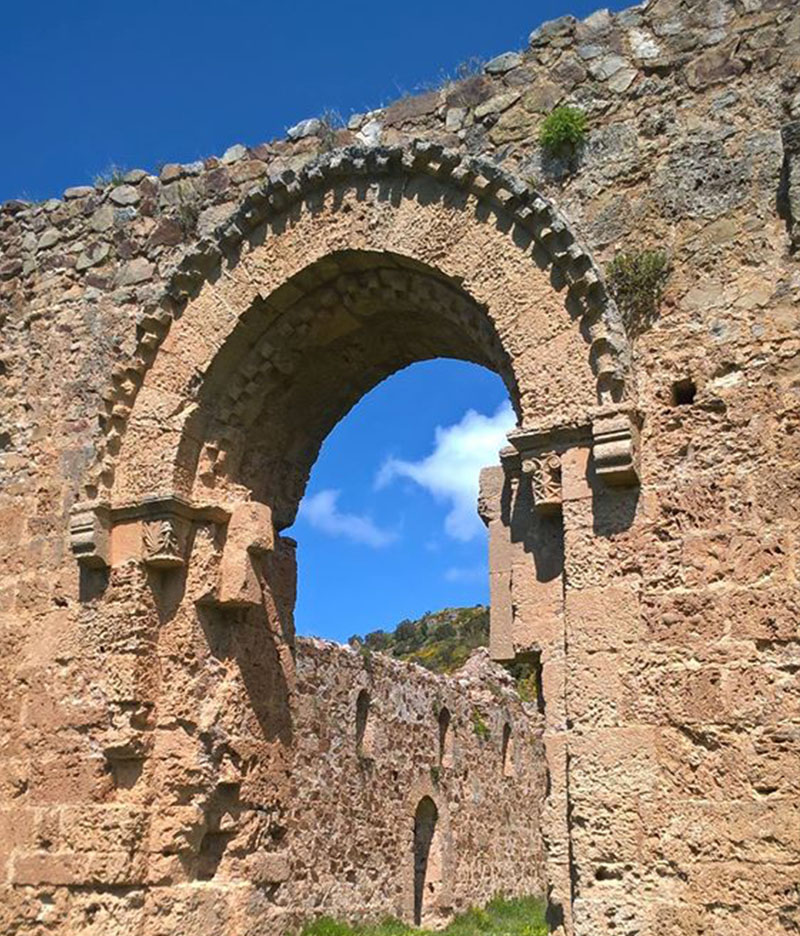
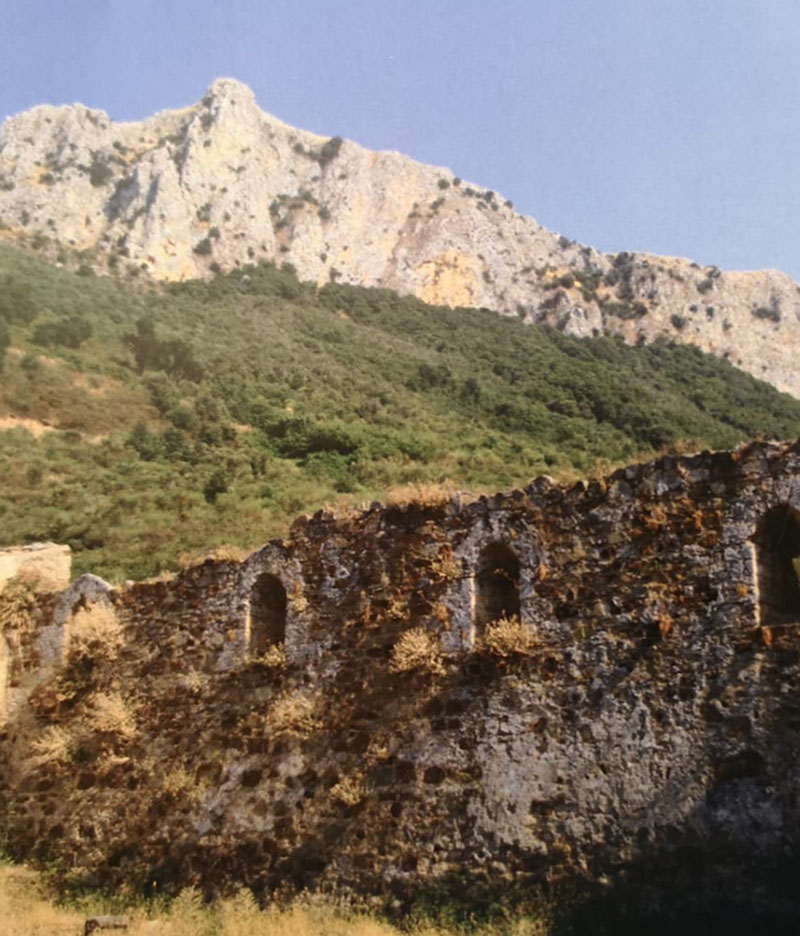
Bibliography
AGOSTARO FRANCESCO, San Giorgio in Gratteri. The intriguing story of a Norman monument, S.Marsala, Cefalù, 2019.
CANCILA ORAZIO, I Ventimiglia di Geraci (1258-1619) Mediterranean Association, Palermo, 2016.
MALATERRA GAUFREDO, De rebus gestis Rogerii Calabriae et Siciliae comitis et Roberti Guiscardi ducis fratris eius, edited by PONTIERI ERNESTO, in Rerum Italicarum scriptores, Bologna 1927-28 (Zanichelli, 1972).


